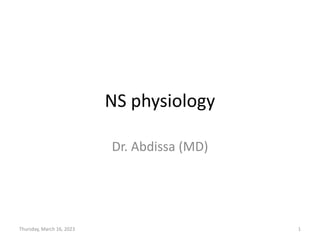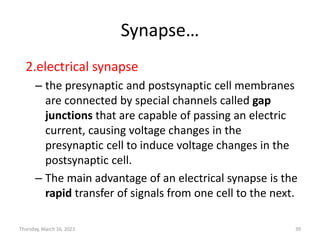1) Neurons communicate with each other via synapses, transmitting signals chemically or electrically. At chemical synapses, an action potential causes neurotransmitter release, generating excitatory or inhibitory postsynaptic potentials.
2) The membrane potential of neurons is maintained by ion gradients. At rest it is negative, around -70mV. An action potential is a brief reversal of the potential triggered when the membrane reaches threshold.
3) Glial cells support and protect neurons. The main types are astrocytes, oligodendrocytes, and microglia. Astrocytes help form the blood-brain barrier and regulate the extracellular environment.












































